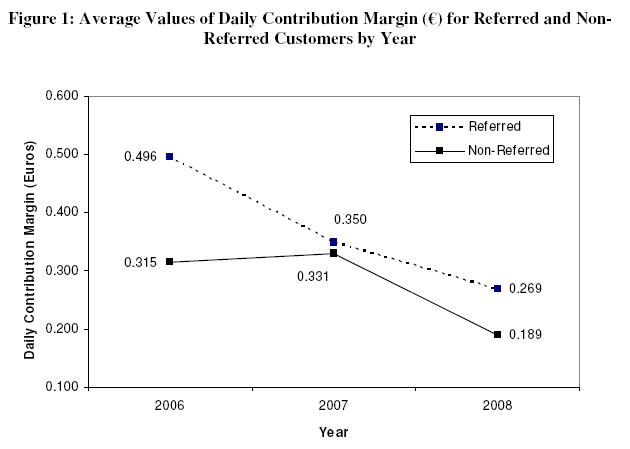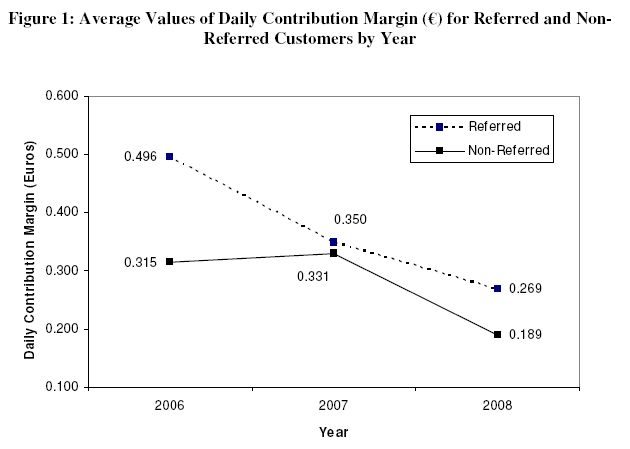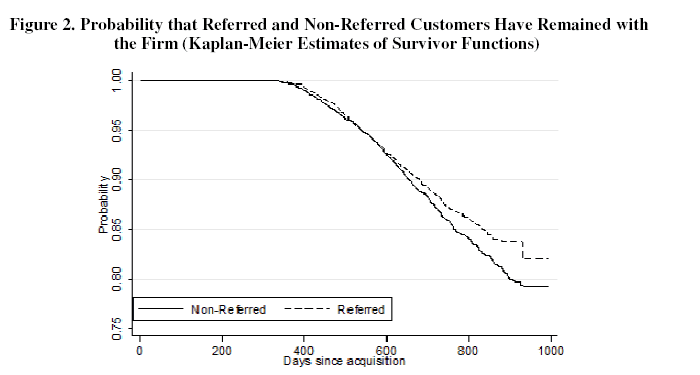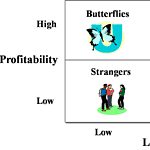Refer a friend programs: are they worth it? Yes, as it happens they are and some very recent research gives us the numbers to back it up.
Referral Programs and Customer Value was recently published by Schmitt, Skiera and Van den Boulte. In this excellent paper, rigorous analysis was applied to a topic of discussion by marketers the world over: do ‘refer a friend’ programs make money?
Their findings: customers acquired through paid customer referral programs have a higher retention rate and higher initial contribution margin than other customers. In other words, yes they do work.
In this post from last week “Using social effects to improve customer retention”, we looked at how client referrals can work in reverse. Losing a client increases attrition for the people already in their social network. Now we have proof that the positive reverse is also true.
What this means is that the effort invested into so called stimulated word of mouth (WOM) programs generate real and valuable client referrals.
The entire paper (in truth, perhaps not the statistical methods section) is interesting because of the completeness with which the authors address the question of successful referral programs. For instance they discuss why customers acquired through client referrals are a better match (and higher margin) for the organisation than the average acquired customer:
- Reciprocity – the person performing the customer referral feels that they owe (because a payment is involved) the company a good customer.
- Triadic balance – where the propensity of two people to feel the same about an object (in this case company) make the friend in “refer a friend” more likely to like the company.
- Homophily – people have friends that are similar to themselves. If I like, or am a good customer, for this company so will be my friend.
Getting back to the source data, the authors were able to access substantial (approximately 10,000) customer records and watch their progress over a 33 month period from acquistion. This allowed them to review not just the initial margin but also look for differences in retention rate and long term margin rates.
For practical marketers the key outcomes from this paper include:
- Higher gross margin levels: customer referrals showed an initial 25% higher contribution margin than non customer referrals. However, the difference reduced over time to be similar at the 29 month mark.
- Better retention rates: customers acquired through referral programs have a higher retention rate and that difference does not reduce.
- Client referrals generate higher value customers: taking (1) and (2) together, customers obtained through successful referral programs are of higher overall value than other customers. For the authors that difference was 25%, i.e. customer referrals were 25% more valuable than non-customer referrals.
- Customer referral programs are a good investment: the net increase in value more than pays for the cost of the reward. This is of course subject to reasonable reward costs. In the case of this study the reward cost was 25 Euros, which was more than covered by the 25% increase in value.
- Abuse costs less than the increase in value: The costs of progam abuse and other negative side effects of customer referral programs were smaller than the increase in value.
In many practical ways the authors have made our lives easier as marketers by proving the value of customer referral programs. Some of the debate can now cease and we can focus instead in creating successful referral programs for our companies.
In fact, any business can use referral marketing software to set up and manage their own referral programs to take their business to the next level.







